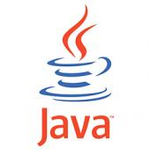 While Sun's Java platform is now almost completely open source, most distributions haven't been updated to ship with the technology (and there is a small amount of code that still isn't open source). Without Java, you could be missing out on running some applications and (less frequently now) Java applets on websites.
While Sun's Java platform is now almost completely open source, most distributions haven't been updated to ship with the technology (and there is a small amount of code that still isn't open source). Without Java, you could be missing out on running some applications and (less frequently now) Java applets on websites.
It is a little bit of a pain to install however, so in this tutorial I'll be showing …
Click through to read more...
Fedora, like many distributions, has a requirement that all the software in its repositories conform to a what is free software and open source.
Fedora as it currently stands has guidelines which only accept Free or open source software. The differences in licenses between what FSF considers Free software the OSI approved list of open source licenses are very limited currently to the reciprocal license (which is not a license …
Click through to read more...
Well, no, not a food olive bazaar (though that would be tasty), but rather Olive, a GTK GUI for Bazaar, a version control system similar to GIT and Subversion. We're not going to go into the differences between the systems, but rather focus on this interesting application, now merged into the Bazaar GTK project.
Olive basically takes all of the CLI commands for Bazaar and mashes them …
Click through to read more...
I get this question often from many: How does one use a Virtual Private Network in Linux?
The easiest way to accomplish this is with the help of Network Manager for both KDE (network-manager-kde) and GNOME (network-manager-gnome).
I'm going to use the GNOME version, however, the KDE variant is very similar. To start, your network must be managed by Network Manager and not through the standard …
Click through to read more...
 While Sun's Java platform is now almost completely open source, most distributions haven't been updated to ship with the technology (and there is a small amount of code that still isn't open source). Without Java, you could be missing out on running some applications and (less frequently now) Java applets on websites.
While Sun's Java platform is now almost completely open source, most distributions haven't been updated to ship with the technology (and there is a small amount of code that still isn't open source). Without Java, you could be missing out on running some applications and (less frequently now) Java applets on websites.